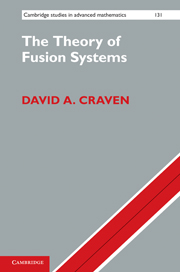Preface
Published online by Cambridge University Press: 05 August 2012
Summary
It is difficult to pinpoint the origins of the theory of fusion systems: it could be argued that they stretch back to Burnside and Frobenius, with arguments about the fusion of p-elements of finite groups. Another viewpoint is that it really started with the theorems on fusion in finite groups, such as Alperin's fusion theorem, or Grün's theorems.
We will take as the starting point the important paper of Solomon [Sol74], which proves that, for a Sylow 2-subgroup P of Spin7(3), there is a particular pattern of the fusion of involutions in P that, while not internally inconsistent, is not consistent with living inside a finite group. This is the first instance where the fusion of p-elements looks fine on its own, but is incompatible with coming from a finite group.
Unpublished work of Puig during the 1990s and even before (some of which is collected in [Pui06]), together with work of Alperin–Broué [AB79], is the basis for constructing a fusion system for a p-block of a finite group. It was with Puig's work where the axiomatic foundations of fusion systems started, and where some of the fundamental notions begin. It cannot be overestimated how much the current theory of fusion systems owes to Puig, both in originating the definition and related notions, and in furthering the theory.
Various results that could be considered part of local finite group theory (the study of p-subgroups, normalizers, conjugacy, and so on) were extended to p-blocks of finite groups during the 1990s and early part of the twenty-first century, but at the time were not viewed as taking place in the more general setting of fusion systems.
- Type
- Chapter
- Information
- The Theory of Fusion SystemsAn Algebraic Approach, pp. ix - xiiPublisher: Cambridge University PressPrint publication year: 2011

